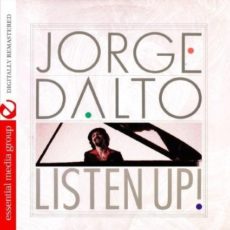
Daily Dose Of Jazz…
Jorge Dalto was born on July 7, 1948 in Roque Pérez, Argentina. During the mid-80s Jorge led the InterAmerican Band featuring his wife, Adela, on vocals. He continued to build his internationally-flavored sound, and collaborations with his wife blended their Latin and Brazilian backgrounds. He served as arranger for the Percussion Jazz Ensemble with Tito Puente, Carlos “Patato” Valdes and Alfredo De La Fe.
As a leader he recorded six albums since his debut recording Chevere in 1976 and another dozen as a sideman performing and recording with Tito Puente, Grover Washington, Fuse One, Spyro Gyra, George Benson, Dizzy Gillespie and Machito, Grant Green, Heaven and Earth, Willie Colón, Gato Barbieri, Bernard Purdie, Ronnie Foster, Tom Malone, Jerry Dodgion, Ernie Royal, Victor Paz, Rubén Blades, David Sanborn, Eric Gale, Steve Gadd, Bob Mintzer, Alan Rubin, Dave Valentin, Jay Beckenstein, Carlos Valdes, Buddy Williams, Stanley Banks, Phil Upchurch, Hubert Laws, Michael Brecker, Randy Brecker, Anthony Jackson, Harvey Mason and Frank Malabé.
Pop, jazz and Afro-Cuban pianist and former George Benson musical director Jorge Dalto passed away of cancer at the age of 39 on October 27, 1987.
![]()
More Posts: piano
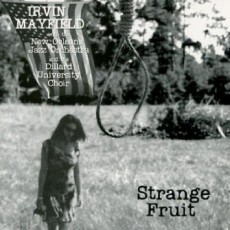
Daily Dose Of Jazz…
Irvin Mayfield, Jr. was born on born December 23, 1977 in New Orleans, Louisiana, the youngest of five brothers, three half-brothers and a half-sister. He received his first trumpet when he was in the fourth grade, asking his father for one after seeing the success a friend of his was having with girls by playing the instrument. Early in his public school education, he befriended fellow schoolmate Jason Marsalis. As a young man he attended and graduated from New Orleans Center for Creative Arts, declined a scholarship to Juilliard School of Music to attend the University of New Orleans, then dropped out during his first semester.
Mayfield began his musical career during the latter half of the 1980s, playing with the Algiers Brass Band, shared a New York City apartment with Wynton Marsalis for a brief period and helped found Los Hombres Calientes with Bill Summers, Jason Marsalis, Victor Atkins III, David Pulphus, and Yvette-Bostic Summers. Signing with Basin Street Records, the groups debut album garnerd much success and Irvin received national recognition.
As an educator Mayfield would go on to be an artist-in-residence and establish the Institute of Jazz Culture at Dillard University, found the sixteen-piece New Orleans Jazz Orchestra, accept a one-year appointment as Artistic Director of Jazz at Orchestra Hall, the five-concert jazz series of the Minnesota Orchestra, received The Chancellor’s Award from the University of New Orleans, and awarded an Honorary Doctorate from Dillard University,
Over the course of his still vibrant career, Mayfield has been a part of the Higher GroundHurricane Relief Benefit Concert in the aftermath of Katrina, and was nominated to the National Council on the Arts by President George W. Bush and was subsequently appointed to the post by President Obama in 2010, serving through 2014. He has performed at the White House and festivals around the country, was made a Cultural Ambassador of the City of New Orleans, has a club named after him in the Royal Sonesta Hotel and has recorded to date, twenty-five albums.
Grammy and Billboard Award-winning trumpeter Irvin Mayfield currently serves as Jazz Artist in Residence for the Apollo Theater, is Artistic Director of the New Orleans Jazz Orchestra and continues to perform, record and tour with his small groups and occasionally with Los Hombres Calientes.
More Posts: trumpet
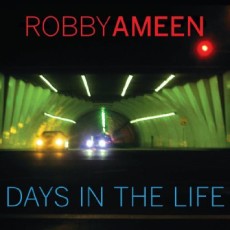
Daily Dose Of Jazz…
Robby Ameen was born on December 7, 1960 in New Haven, Connecticut of Lebanese origins and studied drums with Ed Blackwell and classical percussion with Fred Hinger. He would go on to graduate from Yale with a degree in Literature.
In 1985 he became a member of Ruben Blades’ Seis del Solar band, winning a Latin Grammy for best Salsa record Todos Vuelven Live, Vol. 1 and 2. He would have long-term residencies with Dave Valentin, Conrad Herwig’s Latin Side of…All Stars, Kip Hanrahan, and Jack Bruce and the Cuicoland Express. As a sideman he has recorded on other Grammy winning records including Ruben Blades and Seis del Solar’s Escenas and Brian Lynch’s Simpatico.
Robby has played with Dizzy Gillespie, Eddie Palmieri, Paul Simon, Mongo Santamaria, Carly Simon, Hilton Ruiz, Kirsty MacColl and Steve Swallow among others. As a session musician Ameen has recorded numerous jingles, film scores, and TV music, including the popular HBO series Sex and the City. In 2012, Ameen was the subject on an episode of the Emmy Award-winning Detroit Public Television series Arab American Stories.
As an educator, he co-authored with bassist Lincoln Goines the best-selling instructional book Funkifying the Clave: Afro-Cuban drums for Bass and Drums. He is an international clinician, percussion/drum festival participant and is currently on the faculty at Mason Gross School of the Arts at Rutgers University. Drummer and bandleader Robby Ameen is best known for the unique and powerful Afro-Cuban style he has created and is regarded as one of the world’s most prominent drummers in the area of Latin Jazz.
More Posts: drums
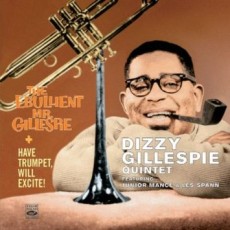
Daily Dose Of Jazz…
Dizzy Gillespie was born John Birks Gillespie on October 21, 1917 in Cheraw, South Carolina, the youngest of nine children of James and Lottie Gillespie. His father, a local bandleader, made instruments available to the children. He started playing the piano at the age of four and taught himself how to play the trombone as well as the trumpet by the age of twelve. From the night he heard his idol, Roy Eldridge, play on the radio, he dreamed of becoming a jazz musician. Receiving a music scholarship to the Laurinburg Institute in North Carolina, he attended for two years before accompanying his family when they moved to Philadelphia.
Gillespie’s first professional job was with the Frank Fairfax Orchestra in 1935, after which he joined the respective orchestras of Edgar Hayes and Teddy Hill, essentially replacing Roy Eldridge as first trumpet in 1937 and making his first recording as part of the band on King Porter Stomp. He would move on to play with Cab Calloway, alongside Cozy Cole, Milt Hinton and Jonah Jones until an altercation with Calloway got him fired. During his period he started writing big band music for bandleaders like Woody Herman and Jimmy Dorsey while freelancing with a few bands – most notably Ella Fitzgerald’s orchestra, comprised of members of the late Chick Webb’s band, in 1942. Avoiding service in World War II, he joined the Earl Hines band followed by a stint with Billy Eckstine’s big band, got reunited with Charlie Parker and finally left to play with a small combo of quintet size.
A forerunner of the evolution of bebop along with Parker, Monk, Bud Powell, Kenny Clarke, and Oscar Pettiford, Dizzy helped shape a new vocabulary of musical phrases. They jammed at Minton’s Playhouse and Monroe’s Uptown House with compositions like Groovin’ High, Woody ‘n’ You, Salt Peanuts and A Night In Tunisia that also introduced Afro-Cuban rhythms.
As an educator Gillespie taught or influenced many of the young musicians on 52nd Street including Miles Davis, Max Roach, Fats Navarro, Clifford Brown, Lee Morgan, Chuck Mangione and even balladeer Johnny Hartman about the new style of jazz, but after ambivalent or hostile reception in Billy Berg’s Los Angeles club, he decided to lead his own big band, though unsuccessful at his first attempt in 1945. He went on to work with Milt Jackson, John Coltrane, Lalo Schifrin, Ray Brown, Kenny Clarke, James Moody, J.J. Johnson and Yusef Lateef, whole appearing as a soloist for Norman Granz’s Jazz at the Philharmonic.
In 1948 Dizzy lost his ability to hit the B-flat above high C due to an automobile hitting the bicycle he was riding. He won the case, but the jury awarded him only $1000, in view of his high earnings up to that point. Not to be sidelined, he went on tour for the State Department earning himself the title Ambassador of Jazz. His new big band would tour the U.S. and record a live album at the 1957 Newport Jazz Festival and featured pianist Mary Lou Williams.
Dizzy immersed himself in the Afro-Cuban movement and hired Chano Pozo and Mario Bauza to play in his bands on 52nd Street, the Palladium and the Apollo Theater. He co-wrote with Pozo the songs Manteca and Tin Tin Deo, commissioned George Russell’s Cubano Be, Cubano Bop, and discovered Arturo Sandoval while on a music researching trip to Cuba.
As his tone gradually faded in the last years in life his performances often focused more on his protégés, such as, Arturo Sandoval and Jon Faddis, all the while keeping his good-humored comedic routines a part of his live act. Dizzy would go on to give 300 performances in 27 countries, appeared in 100 U.S. cities in 31 states and the District of Columbia, headline three television specials, performed with two symphonies, and recorded four albums.
Gillespie put himself on the ballot as a write-in candidate of the 1964 Presidential election, published his autobiography, To Be or Not To Bop, was a vocal fixture in many of the John & Faith Hubley’s animated films, such as The Hole, The Hat and Voyage to Next. He led the United Nation Orchestra, toured with Flora Purim and David Sanchez in his band, received Grammy nominations, guested on The Muppet Show, Sesame Street and The Cosby Show and had a cameo on Stevie Wonder’s hit Do I Do and Quincy Jones’ Back On The Block.
Inducted into the Down Beat Magazine’s Jazz Hall of Fame, Dizzy was also honored by being crowned a traditional chief in Nigeria, received the Ordre des Arts et des Lettres from France, and was named Regent Professor by the university of California, received fourteen honorary doctorates, received a Grammy Lifetime Achievement Award, the Polar Music Prize, a Hollywood Walk of Fame Star, the Kennedy Center Honors Award, and the Ameican Society of Composers, Authors and Publishers Duke Ellington Award for 50 years of achievement. Composer, performer, bandleader and trumpeter Dizzy Gillespie passed away of pancreatic cancer on January 6, 1993 in Englewood, New Jersey at the age of 75. In 2014, Gillespie was inducted into the New Jersey Hall of Fame.
More Posts: trumpet
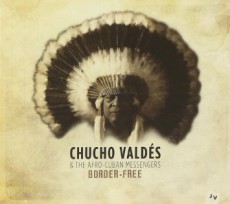
Daily Dose Of Jazz…
Chucho Valdés was born Jesús Valdés Rodríguez, the son of famed pianist Bebo Valdés, on October 9, 1941 in Quivican, La Habana, Cuba. His first recording sessions as a leader took place in early 1964 at Areíto Studios of Havana. These early sessions included Paquito D’Rivera on alto saxophone and clarinet, trombonist Alberto Giral, flutist Julio Vento, Carlos Emilio Morales on guitar, Kike Hernández on double bass, Emilio del Monte on drums and Óscar Valdés Jr. on congas.
Throughout the 1960s and 1970s, these would be the members of his jazz combo, whose lineup would often change, sometimes including bassists Cachaito and later Carlos del Puerto, and drummers Guillermo Barreto and later Enrique Pla. In 1967, Valdés and his band mates became founding members of Orquesta Cubana de Música Moderna, together with many other well-known Cuban musicians. This all-star big band would back singers such as Elena Burke and Omara Portuondo.
By 1973, Chucho along with other members of the Orquesta founded Irakere that bridged songo and Afro-Cuban jazz. He would simultaneously continue his solo career, eventually signing with Blue Note Records, which allowed him to realize international exposure.
In the late 1990s, he focused on his solo career, leaving directorship of Irakere to his pianist son Chuchito. He played occasionally with his father until his death in 2013. Since 2010, Chucho performs with a backing band known as The Afro-Cuban Messengers.
Pianist, bandleader, composer and arranger Chucho Valdés, whose career spans over 50 years, has received critical media acclaim, won five Grammy Awards, contributed two original compositions to Roy Hargrove’s Crisol band’s Havana project, and was nominated Goodwill Ambassador of the Food and Agriculture Organization of the United Nations. He has two dozen albums recorded as a leader and continues to perform, compose record and tour.
More Posts: piano


